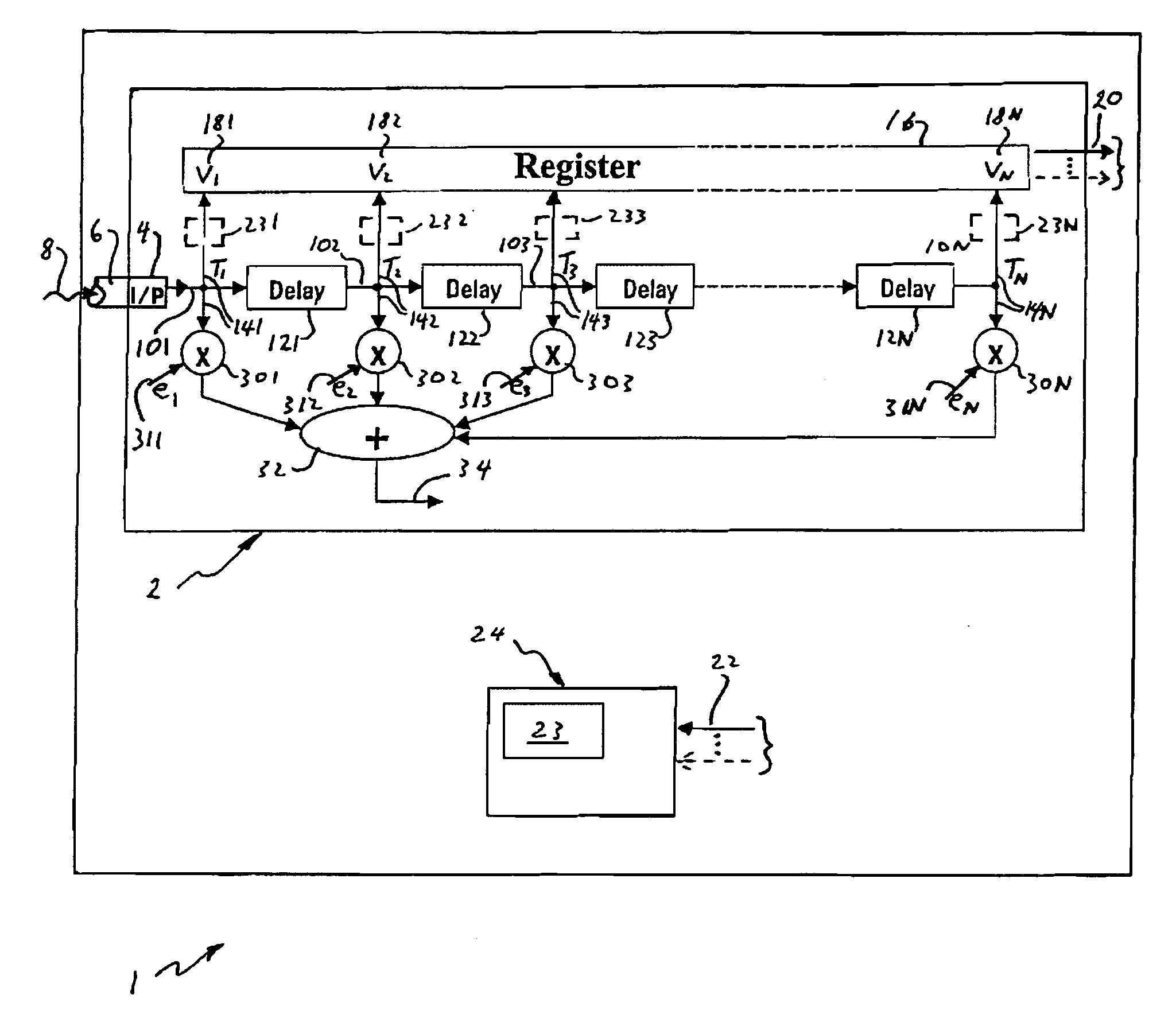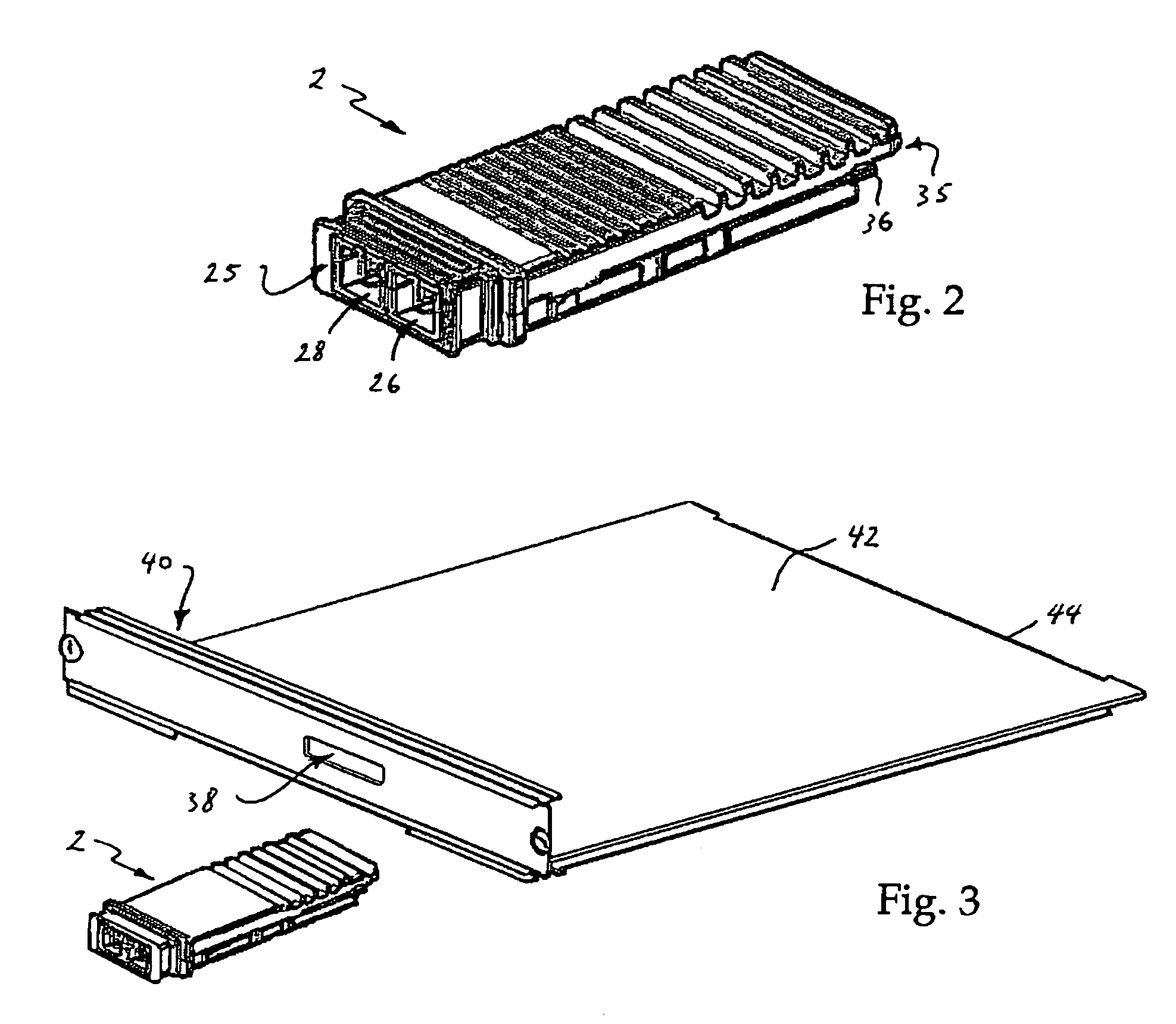Communications test receiver
- Summary
- Abstract
- Description
- Claims
- Application Information
AI Technical Summary
Benefits of technology
Problems solved by technology
Method used
Image
Examples
Embodiment Construction
[0047]FIG. 1 shows a test system 1 having a test receiver unit 2 for receiving and testing an input optical signal received from an optical fibre 6. The test receiver unit has a photoreceiver input (I / P) 4 for receiving optical radiation 8 from the fibre 6. The optical radiation 8 is modulated to carry an optical signal. The input 4 is conventional, and so will not be described or illustrated in detail, but includes a photodetector and associated amplification circuitry for converting the optical radiation into an electrical signal 101. The electrical signal 101 in this example includes non-random distortion, for example inter-symbol interference.
[0048] The test receiver unit 2 includes at least one delay line 121 to 12N arranged to delay the electrical signal 101, at least two taps (T1 to TN) 141 to 14N from the delay lines 121-12N by which access is had to delayed electrical signals 102-10N and optionally also to the un-delayed signal 101. A register 16 is connected to the delay ...
PUM
 Login to View More
Login to View More Abstract
Description
Claims
Application Information
 Login to View More
Login to View More - R&D
- Intellectual Property
- Life Sciences
- Materials
- Tech Scout
- Unparalleled Data Quality
- Higher Quality Content
- 60% Fewer Hallucinations
Browse by: Latest US Patents, China's latest patents, Technical Efficacy Thesaurus, Application Domain, Technology Topic, Popular Technical Reports.
© 2025 PatSnap. All rights reserved.Legal|Privacy policy|Modern Slavery Act Transparency Statement|Sitemap|About US| Contact US: help@patsnap.com



